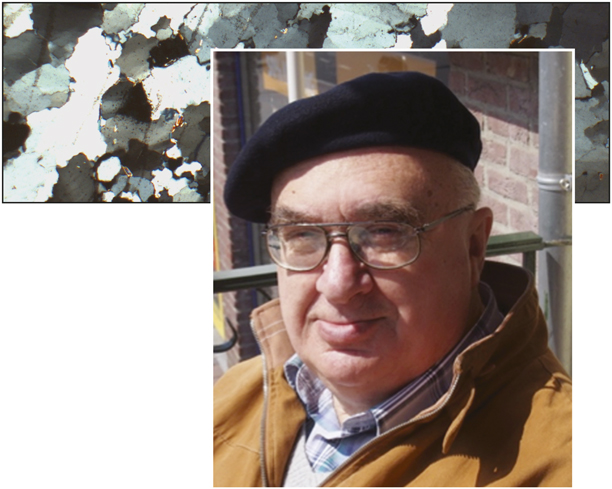Lasar Simhovich Shvindlerman, a leading scholar in materials science who initiated the study of the evolution and physics of individual grain and interphase boundaries in metals, died March 3 at the University Clinic of RWTH in Aachen, Germany. He was 82.
Shvindlerman was born to Jewish-Ukrainian parents in Gitomir, Ukraine, which was then part of the Soviet Union. His father was a Red Army Officer, and his mother was a pharmacist. After World War II, the family settled in Kiev, where he graduated from high school and continued his education at the Kiev Polytechnic Institute studying metallurgical engineering. After earning his engineering degree, he worked in the steel industry before moving to Moscow to begin doctoral studies at the Moscow Institute for Steel and Alloys. There he met Boris S. Bokstein, who became a long-standing close friend and coauthor of many scientific papers and books.
After earning his PhD degree, Shvindlerman spent the first half of his scientific career (1970–1993) at the Institute of Solid State Physics of the Soviet Academy of Sciences in Chernogolovka. There he headed the Group of Internal Interfaces in Metals, which later became an independent laboratory. During that period, he developed a novel approach for studying the evolution of internal interfaces in metals, which relied on physical studies and observations of individual, well-characterized grain and interphase boundaries in specially prepared bi-crystalline samples. Previously, it had been customary to deduce the properties of “typical” or “average” grain boundaries by analyzing the behavior of ensembles of grain boundaries in polycrystalline samples. One of Shvindlerman’s favorite jokes was to compare the observation of the properties of “average” grain boundaries with the “average” body temperature of patients in a hospital: While the average temperature may be normal, it could be that half of the patients have a severe fever and the other half are dead.
Some of Shvindlerman’s most significant achievements during that period included (1) determining the dependence of the mobility, diffusivity, and cohesion strength of grain boundaries on their misorientational degrees of freedom by using bi-crystalline specimens; (2) the discovery of athermal grain-boundary motion in Zn; (3) the discovery of grain-boundary phase transformations in grain and interphase boundaries; and (4) the development of statistical topology-based models of grain growth. These contributions have had a great impact on the current understanding of the structure and physical properties of grain boundaries. The misorientation dependencies of the grain-boundary properties and the kinetic coefficients, as determined by Shvindlerman and his students, have served as benchmarks for numerous atomistic simulations and theoretical models of grain-boundary structure and evolution.
With the opening of the Soviet borders (after the Iron Curtain was lifted), Shvindlerman began to travel abroad, meeting many colleagues whom he had previously only read about in literature. Shvindlerman’s close interaction and personal friendship with Günter Gottstein, who headed the Institute of Physical Metallurgy and Metal Physics at RWTH Aachen University, deserves special mention. According to Gottstein, “Owing to a substantial overlap of scientific interests and favorable personal chemistry, he (L.S.) teamed up with the Institut für Metallkunde und Metallphysik at RWTH Aachen University to establish a new interface dynamics laboratory dedicated to the measurement, theory, and simulation of the motion of solitary and connected grain boundaries in metals, especially their junctions. Lasar Shvindlerman and co-workers demonstrated by theory and experiment that, contrary to common belief, there are physical limitations to curvature-driven grain growth, and that new options for microstructure control arise from grain- boundary junction engineering.”Reference Shvindlerman1

From 1994, Shvindlerman spent most of his time at RWTH Aachen, where he was a guest professor and worked until his last days. During the latter half of his career, he received many awards in recognition of his contributions to physical metallurgy, including the Werner Köster Award (2005), the Honorary G. Kurdyumov Medal for outstanding contributions to physical metallurgy (2010), and the Cyril Stanley Smith Award (together with G. Gottstein) awarded by the Steering Committee of the Recrystallization and Grain Growth Conference (2013).
Shvindlerman did not have children of his own, yet he was fortunate to establish a scientific school: His academic grandchildren are now getting tenured professorships themselves. He developed a strong, lifelong relationship with many of his former students, for whom the years of doctoral studies in his group became a life-shaping experience. He was active in research, full of new ideas, optimistic, and radiating with his own special type of humor until his last days. This is how he will be remembered by his colleagues, friends, and students.


